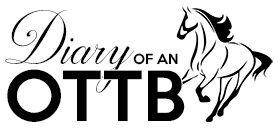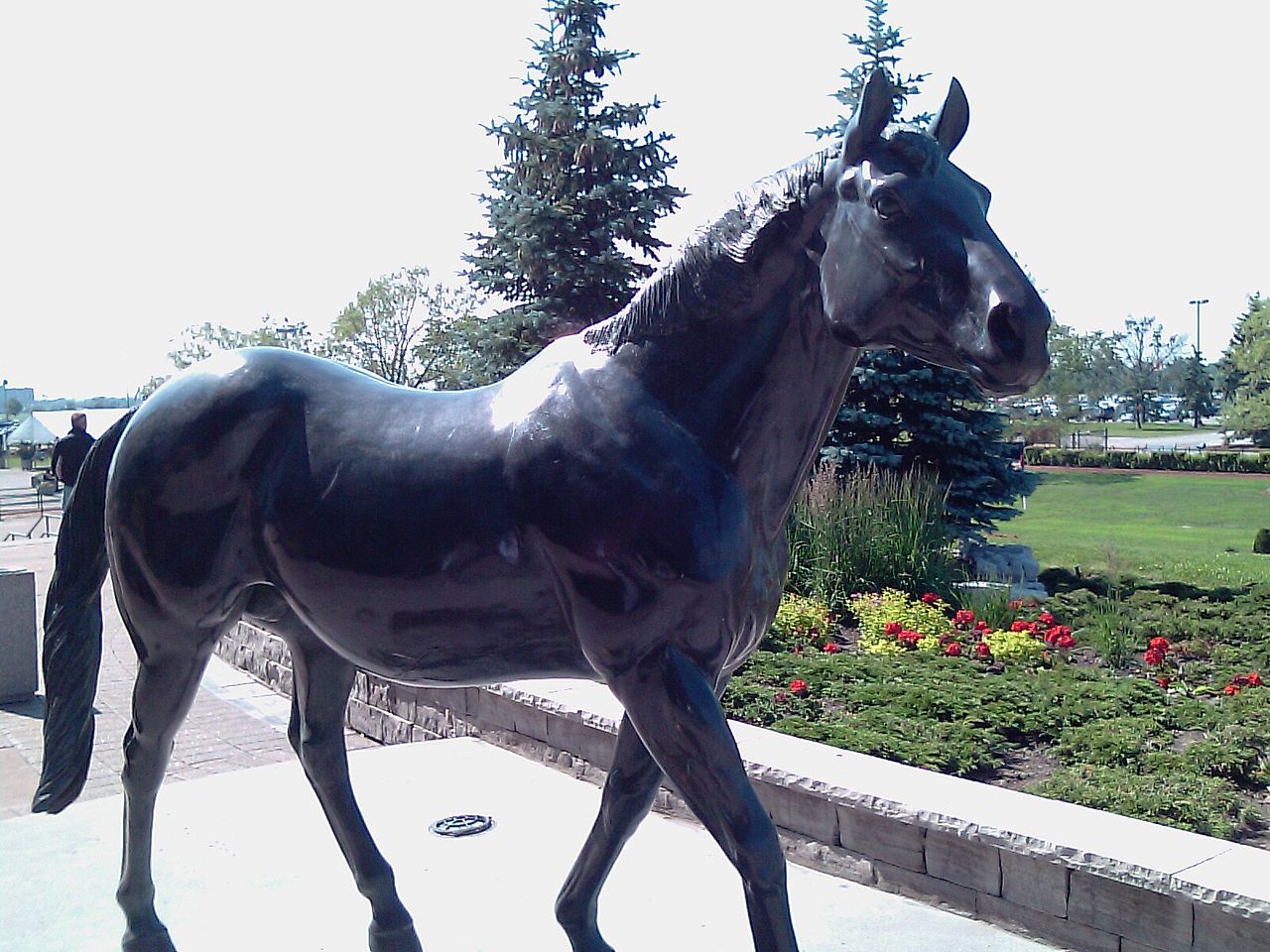I can’t tell you how many times I’ve hopped on Facebook and seen something like this in horse groups. [Insert breeding chart] “What do you think of my new guy’s breeding?” … “Would he make a good sport horse… jumper… eventer… Are they friendly… willing…”
The names in those pedigree charts are often the names of legends. Some see that pedigree as an indicator of success and others are willing to bet hundreds of thousands of dollars on those legendary names, buying well built weanlings at major sales across the country in the hopes of winning millions on the track. Those names on papers don’t mean everything, but they certainly mean something.
But how much do you know how the legends themselves?
With that in mind, let’s take a look at some of the most famous racehorses in history who’ve gone on to produce some champions and hundreds and thousands of foals who failed on the track but may have found success in your own backyard.
We’ll start this series with the most legendary thoroughbred to ever come out of Canada — Northern Dancer.
Canada’s Most Famous Racehorse
Today his name is one of the most commonly seen repeated on the breeding charts of many modern Thoroughbred champions, including Triple Crown Winners American Pharoah and Justify (and my own OTTB, winner of one race, Sure Prize).
That name is Northern Dancer.
He was known as the little horse with a big heart, as “Canada’s Most Famous Racehorse”, “Sire of the Century” and a “super stud for all times.” All for good reason. Northern Dancer was a champion whose descendants continue to dominate racing today and for what he lacked in stature he made up for in attitude.
Born in 1961 on Windfield Farms in Oshawa, Ontario, Northern Dancer was “the little horse that could” and a constant underdog. As a yearling his owner, industrialist E.P. Taylor, put him up for auction with a reserve price of $25,000. Standing under 15 hands tall, there were no interested bidders so Taylor ended up keeping the colt. The following year the two-year-old showed promise, making his debut at Fort Erie Racetrack in a 5 1/2 furlong maiden race for Canadian bred horses, ridden by jockey Ron Turcotte (who later went on to ride the Triple Crown Winner, Secretariat). The little horse that could exploded in the final furlong ahead of seven other two-year-olds in the pack. The same year he would also win the Coronation Futurity and go on to be named the Canadian Champion Two-Year-Old Colt.
His three-year-old campaign started with similar success, winning the Flamingo Stakes, Blue Grass Stakes and Florida Derby before setting sights on Kentucky in May of 1964.
At the 90th Running of the Kentucky Derby, Northern Dancer was the underdog battling the favorite, Hillside. In a tight race the Dancer won by a neck, becoming the first Canadian-bred cold to win the Derby while setting a track record of 2:00.
And the great Canadian colt wasn’t stopping with the roses. He went to Pimlico, again an underdog, only to win the Preakness by 2 and a 1/2 lengths, beating out the favorite Hillside for a second consecutive time.
Looking to become Canada’s first Triple Crown Champion at the Belmont Stakes, the Dancer finished third some six lengths behind, unseated by a horse named Quadrangle.
And still the little Canadian horse that could wasn’t done yet. He finished out his three-year-old campaign winning the Queen’s Plate at Woodbine Racetrack in Etobicoke, Ontario.
For all his accomplishments in 1964 he was named the both the U.S. and Canadian Champion 3-Year-Old Colt and Canadian Horse of the Year. Despite losing the Belmont and falling just one win shy of the Triple Crown, the mayor of Toronto declared June 8, 1964 to be “Northern Dancer Day.” The idea of a ticker tape parade was allegedly nixed due to the colt’s high strung personality.
Amid all his success, Northern Dancer continued to race through July of 1964 when he bowed a tendon during a workout at Belmont and didn’t respond to treatment, effectively ending his racing career.
Over his 15-month career of 18 races, the Dancer won 14 and never finished worse than third, earning over $580,000. He was the first non-human inducted into the Canadian Sports Hall of Fame the following year in 1965 and inducted to both the Canadian Horse Racing Hall of Fame and the U.S. Racing Hall of Fame in 1976.
Retirement and Stud Career
Following his bowed tendon training at Belmont, Northern Dancer returned home to Canada and retired to stud in 1965 at Taylor’s Windfields Farm in Oshawa for an initial fee of $10,000.
Little did anyone know that the Dancer’s stud career would eventually surpass the notoriety of his racing career.
His first descendants reached racing age in 1968, during which Viceregal, went undefeated and was named Horse of the Year in Canada. His second round of foals included Nijinsky, who went on to win the English Triple Crown.
His progeny were so sought after in the early ’70s that he was the leading sire in North America in 1971 as well as the leading sire in Great Britain and Ireland in 1970, ’78, ’83 and ’84. According to the Jockey Club, Northern Dancer would sire 411 winners and 147 stakes winners from 645 registered foals — a win percentage of nearly 64%. The Dancer’s stud fee rose from a measly $10,000 to $500,000 in 1984 and to $1,000,000 in 1986 with no guarantee of a live foal.
Northern Dancer’s progeny continue to be so prolific and talented that in 2014 and 2018 all 20 horses in the Kentucky Derby had Northern Dancer in their pedigree at least once.
“The Dancer’s gone.”
Northern Dancer stood for stud for more than 25 years at Windfield Farms outside of Toronto and later at their facility in Maryland. He lived to be 29-years-old when a bout with colic couldn’t be treated. His death in 1990 made front-page headlines across newspapers in the United States and Canada, and he remains one of only two horses ever to be inducted into the Canadian Sports Hall of Fame.
As It Happens co-host Al Maitland announced on November 16, 1990, “The Dancer’s gone.” You can listen to that clip below.
Remembered for his spunky personality, Northern Dancer never seemed to care when a hay delivery truck pulled onto the farm. If the truck was delivering a mare on the other hand, Northern Dancer’s attitude would come out in full force, as described in a 2017 article from America’s Best Racing, “Northern Dancer: The Patriarch Stallion.”
“He would rear up, rest his forelegs on the sill of the bottom half of the door, whinny and squeal as the loading ramp dropped,” said Benny Miller, a farm manager at Windfields Maryland operation. “He acted like every mare on the farm would be his conquest. To calm things down we moved him to the back side of the stallion barn.”
He was also the kind of Thoroughbred that many of us know today – energetic, competitive, and maybe a little clumsy.
Said Miller of the sire of the century, “He was never turned out in Canada, so it took awhile before we got Mr. Taylor’s permission to turn him out. In the meantime, we’d find him with a foot in the hanging feed tub, a foot in the hay net, or his front feet on the doorsill of the stall looking down on you. Out in the pasture anything odd would set him off. Watching the foxhunters go by, way across the field, would really get him stirred up. We had to go out and get him. He’d be in a lather, running up and down the fence line. It was just his competitive nature. He was all heart and determination.”
Northern Dancer’s Legacy
Today, Northern Dancer’s legacy is prominent across the Thoroughbred racing industry. According to a 2014 article in the Toronto Star, Northern Dancer’s genes appear in more than 70 percent of all Thoroughbreds today, including every horse that ran in the Kentucky Derby in 2014 and 2018.
“I don’t think there is another Northern Dancer yet,” said veteran pedigree writer Bill Oppenheim.
At the height of his breeding career he was perhaps the highest paid retired athlete on the planet with stud fees being privately sold with no guarantees of a live birth for $1 million. The Dancer would breed 30-35 times per year, while today’s stallions breed upwards of 150 times per year.
“Can you imagine what Northern Dancer’s influence would be if he had been bred 150 times a year?” said his first and final jockey, Ron Turcotte.
Today there are reminders of Northern Dancer all over the Thoroughbred industry, and not just in the genes of current competitors. Outside of Woodbine Racetrack, his home track, stands a life size statue of the little horse that nobody wanted, and at the same track the Northern Dancer Turf Stakes are run in his honor. In Kentucky at the famed Churchill Downs, the Northern Dancer Grade III Stakes was created in 2002 while the Northern Dancer Plate is run ever late January at Hyderabad Race Club in India.
On the day Northern Dancer retired at Woodbine, Ron Turcotte climbed aboard, just as he had the first time to the roars of an electric crowd. According to the National Post, people turned out by the thousands to bid farewell to a Canadian hero as Turcotte took the Dancer around the track for one final time.
“I have seen some good ones and I have ridden some great ones,” said Mr. Turcotte. “And I am extremely proud to say that I rode the greatest Canadian-bred horse and greatest sire in the history of racing.”

